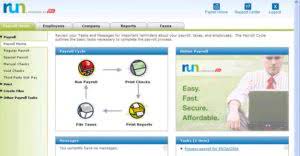
DEF LLC, a small manufacturing company, may struggle to invest in new equipment or technology due to its negative retained earnings. This limitation can stifle growth and hinder the company’s ability to remain competitive. On one hand, high retained earnings could indicate financial strength since it demonstrates a track negative retained earnings record of profitability in previous years. On the other hand, it could be indicative of a company that should consider paying more dividends to its shareholders. This, of course, depends on whether the company has been pursuing profitable growth opportunities.

companies can incrementally return almost Rs. 886 billion to shareholders
However, it is more difficult to interpret a company with high retained earnings. When the retained earnings balance is less than zero, it is referred to as an accumulated deficit. Companies must adopt a comprehensive approach to address negative retained earnings, balancing immediate actions with long-term planning. A detailed financial audit is essential to identify the root causes of the deficit. Analyzing income and cash flow statements helps pinpoint inefficiencies or overspending. Implementing cost controls and optimizing operations can reduce expenses and improve margins.
Looking for Tax Help?

Due to the integration of the Canadian tax system, you do not have to pay any personal tax if your investment income doesn’t exceed a certain threshold. Such a threshold, in 2019 for the province of Ontario is $51,800 for eligible dividends and $30,700 for non-eligible dividends (approximate amounts). This is applicable only if you have dividend income only and no other source of income. Payment of dividends is largely governed by the business acts (or laws) of the jurisdiction in which the corporation is incorporated. Generally, directors of the corporation pass a resolution to issue a dividend to shareholders.

How to make $1,000 a month in dividends?
Companies facing these issues might need some serious changes or help from financial experts. This shows what percentage of profits the company keeps versus distributing. Retained earnings are therefore an accounting entry which acts as a reserve for unallocated earnings, pending arbitration.
Retained Earnings in Business: A Key to Growth or a Potential Pitfall?

The resulting figure is your ending retained earnings formula, which will also be your beginning retained earnings figure for the next reporting period. Positive retained earnings are a good thing — it indicates a company is financially healthy. Next, you’ll subtract dividend payments from the sum of the beginning retained earnings and the net income.
- At the end of the period, the company has $650,000 in retained earnings, which can be reinvested into business operations.
- The company needs to communicate with its shareholders and provide regular updates on its financial performance and plans for improvement.
- If you’re investing in growth stocks or tech startups, recognize that retained earnings don’t provide the full picture.
- In the latter case, the rock-bottom valuation of a company with a long-term problem may reflect investors’ perception that its very survival may be at stake.
- Negative retained earnings signal problems in a company’s performance or strategy.
It helps investors and others make smart choices based on their financial goals and how much risk they’re okay with. Companies usually distribute dividends to their shareholders in cash, but they sometimes give them stock instead. Dividends of any kind, cash or stock, represent a return of profits to the company owners, so they reduce the retained earnings account in the stockholders’ equity section of the balance sheet.
Example of the Retained Earnings Formula

In these cases, the ex-dividend date will be deferred until one business day after the dividend is paid. You’ll need to build your portfolio up to at least $1 million to make $100,000 each year through dividend investing. Conservative options trading will give you more capital to invest into more dividend stocks and get you closer to the 6-figure goal. Generally speaking, a dividend payout ratio of 30-50% is considered healthy, while anything over 50% could be unsustainable.
Company Owner at AWFS Consulting Inc.
- Additional paid-in capital is included in shareholder equity and can arise from issuing either preferred stock or common stock.
- Currently, Chevron earns $1.51 TTM, with a current dividend of $4.46 per share, and a dividend yield of 4.46%.
- This can involve cutting unnecessary costs, such as travel, hiring, etc.
- Paying dividends from a position of negative retained earnings can be seen as a breach of this duty, especially if it jeopardizes the company’s financial stability.
A dividend paid out of an asset revaluation reserve can be franked if not required to sure-up its share capital. A stock dividend is a payment to shareholders that consists of additional shares rather than cash. For example, if a company issues a stock dividend of 5%, it will pay 0.05 shares for every share owned by a shareholder. A high dividend yield can be appealing since you’re getting more income per dollar invested, but a high yield isn’t always a positive thing. It could mean that the company’s stock price has been falling or dividend payments have been increasing at a higher rate than the company’s earnings. https://www.bookstime.com/articles/purchase-discounts “Negative retained earnings” and “income statement” are distinct concepts, but they interrelate in an organization’s record-keeping process.
- For instance, a company in a competitive industry may struggle to maintain market share, leading to reduced revenue and pressure on margins.
- A company’s shareholder equity is calculated by subtracting total liabilities from its total assets.
- This, of course, depends on whether the company has been pursuing profitable growth opportunities.
- As a result, additional paid-in capital is the amount of equity available to fund growth.
- In the context of a small business, especially sole proprietorships or single-member LLCs, the Owner’s Draw plays a significant role in the calculation of retained earnings.
- To get a better understanding of what retained earnings can tell you, the following options broadly cover all possible uses that a company can make of its surplus money.
Key Takeaways
Positive retained earnings are a sign of a healthy, growing business, where profits are reinvested to fuel further success. On the flip side, negative retained earnings, where your accumulated losses surpass your profits, paint a much gloomier picture. Retained earnings are a type of equity and are therefore reported in the shareholders’ equity income statement section of the balance sheet. Although retained earnings are not themselves an asset, they can be used to purchase assets such as inventory, equipment, or other investments. Therefore, a company with a large retained earnings balance may be well-positioned to purchase new assets in the future or offer increased dividend payments to its shareholders.

